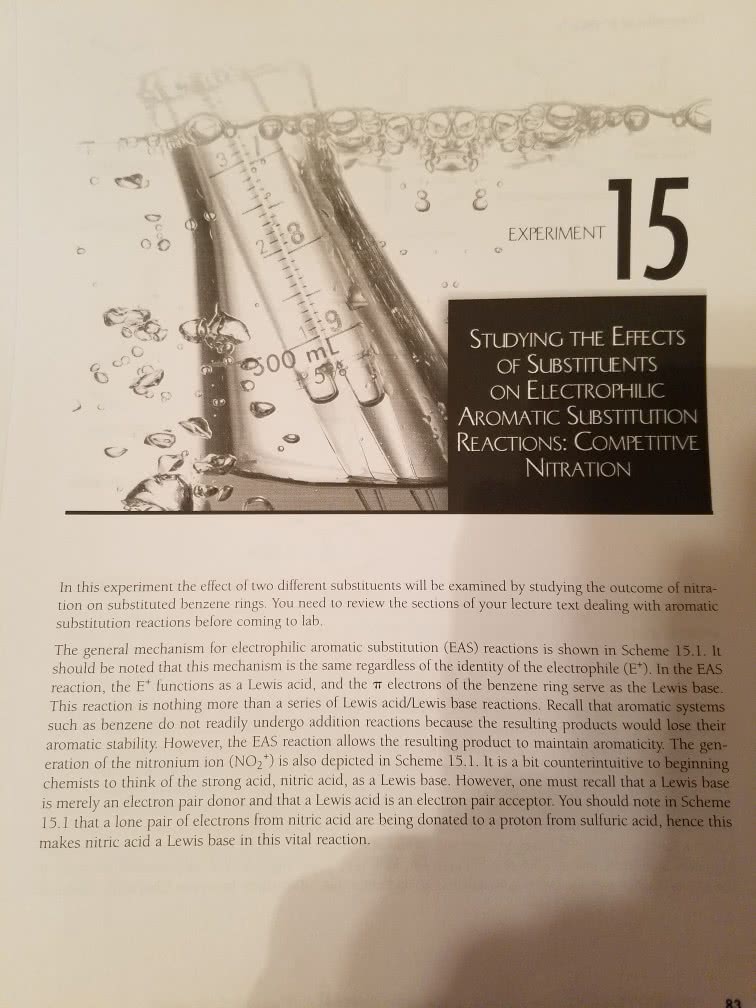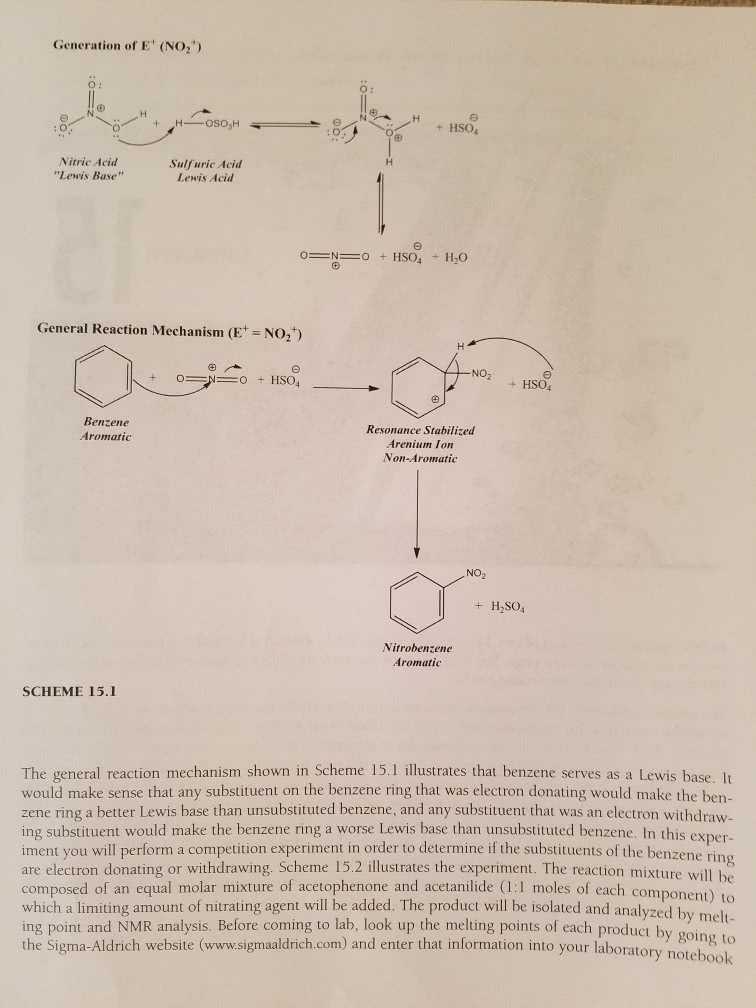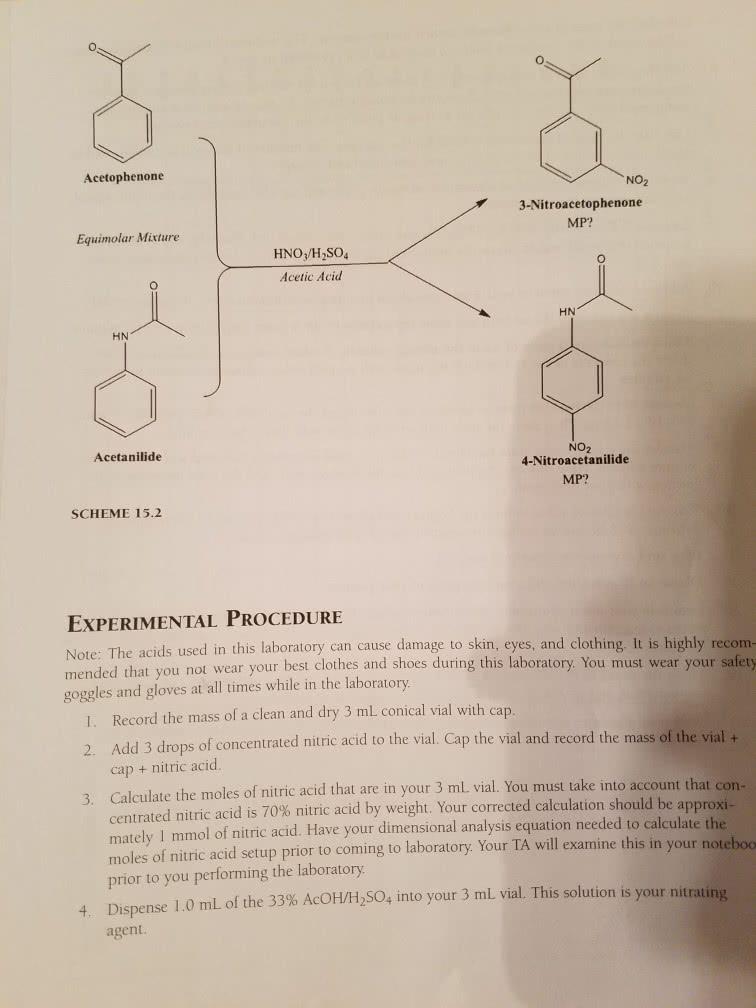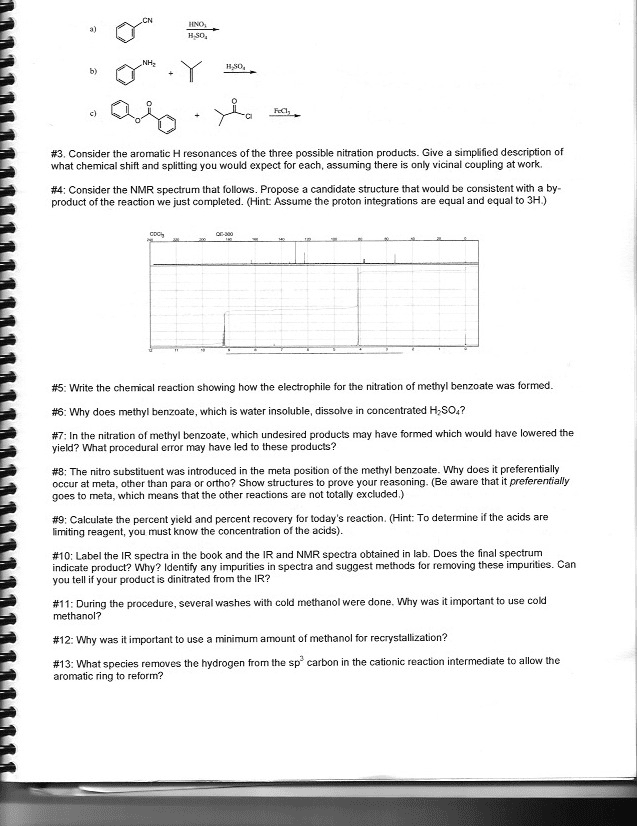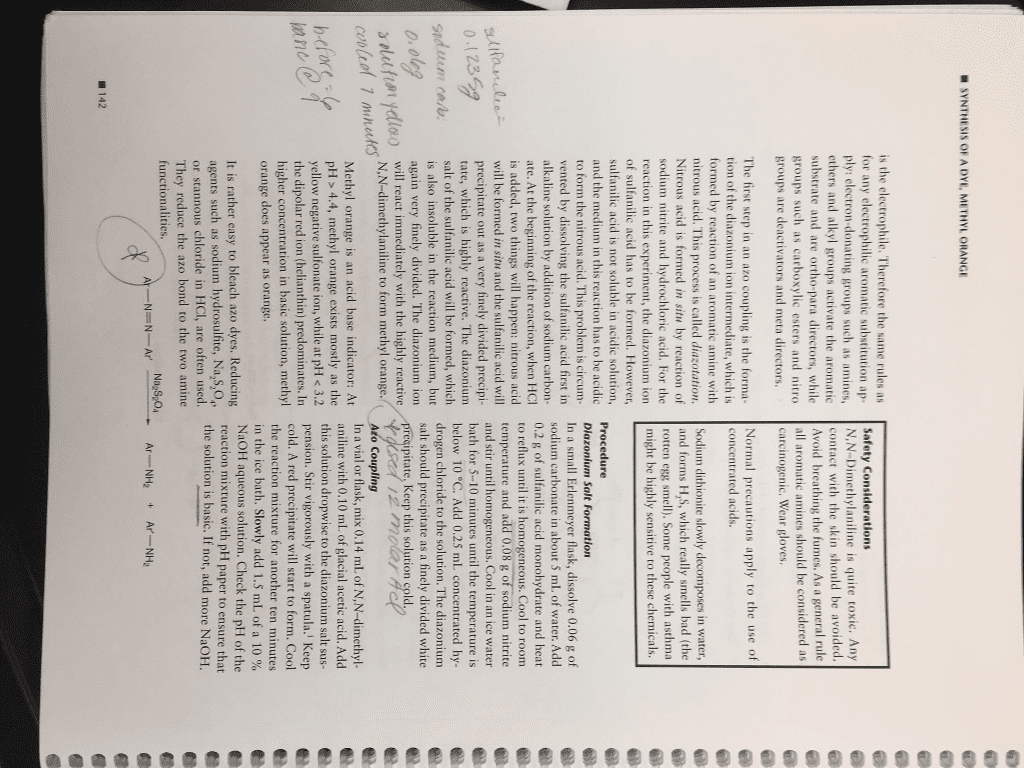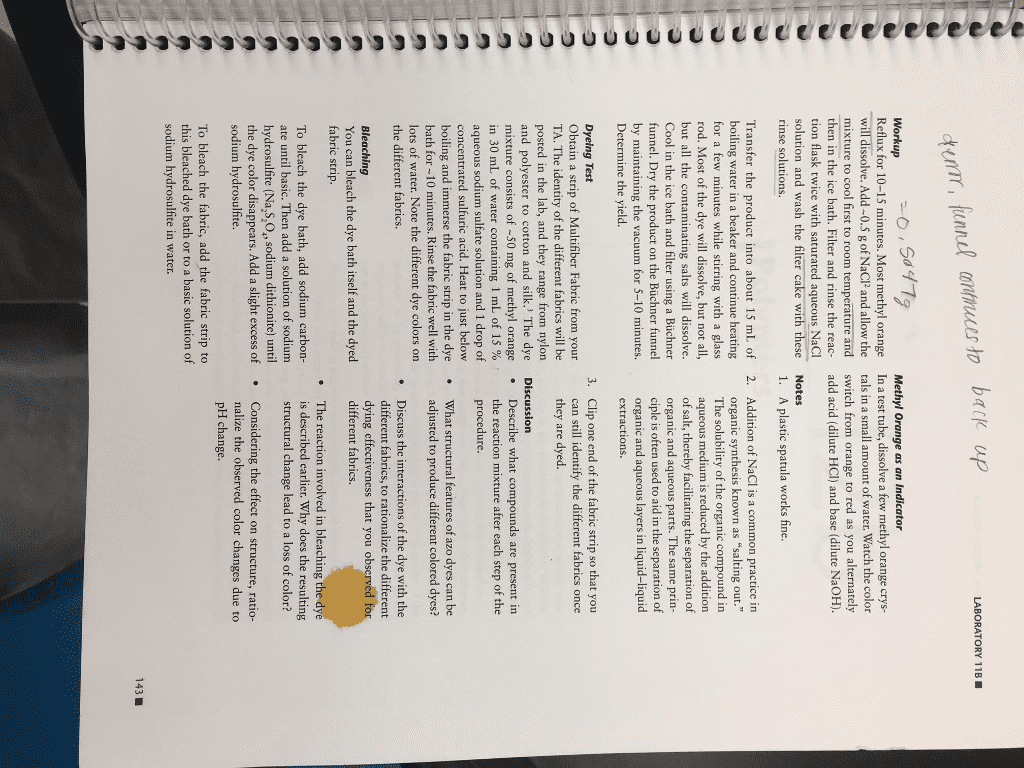CHM 1321 Lecture Notes - Lecture 6: Electrophilic Aromatic Substitution, Acetanilide, Nitronium Ion
128 views5 pages
13 Feb 2018
School
Department
Course
Professor

20
CHM 1321 Full Course Notes
Verified Note
20 documents
Document Summary
The purpose of this lab was the nitration of acetanilide demonstrating regioselectivity in electophilic aromatic substitution. In the first part of the lab, a nitronium ion is produced from the reaction of sulphuric acid and nitric acid, where sulphuric acid, the stronger acid, donates a proton, forming a molecule of water. The nitronium ion is a strong electrophile and in the second part it reacts with acetanilide to produce a nitro acetanilide, in an electrophilic aromatic substitution (eas). There are three possible isomers that the electrophilic substitution can produce; para, where the no2 is on carbon 4, ortho, where it"s on carbon 2, and meta, carbon 3. This shows the possible products, para is the major product produced due to resonance stabilization as the charge can be delocalized over many atoms, and so the carbocation intermediate is the most stable. Ortho is favored less than para because of sterics from the acetanilide functional group.
Get access
Grade+20% off
$8 USD/m$10 USD/m
Billed $96 USD annually

Homework Help
Study Guides
Textbook Solutions
Class Notes
Textbook Notes
Booster Class
40 Verified Answers
Class+
$8 USD/m
Billed $96 USD annually

Homework Help
Study Guides
Textbook Solutions
Class Notes
Textbook Notes
Booster Class
30 Verified Answers


